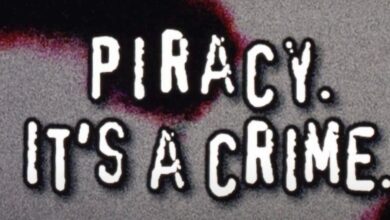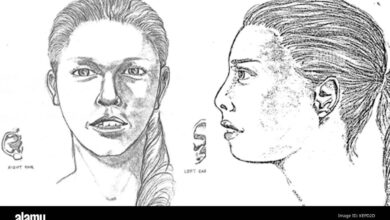European Consumer Group Sues Over CD Copy Protection Impact and Implications
European consumer group sues over CD copy protection, igniting a debate about consumer rights, music industry practices, and the future of digital music. This lawsuit challenges the use of copy protection technologies on CDs, highlighting concerns about limited access and ownership of music. The case promises to unravel the complexities of intellectual property, digital rights management (DRM), and the evolving landscape of music consumption.
The legal action, initiated by a consumer group, targets companies involved in the production and distribution of CDs. The core argument revolves around the belief that copy protection harms consumers by limiting their ability to access and enjoy their purchased music. This article delves into the historical context, technological aspects, and potential implications of this legal challenge for the music industry and consumers.
Background of the Lawsuit
A European consumer group has initiated legal action against a major music distribution company, alleging that their digital music copy protection schemes unfairly harm consumers. The lawsuit centers on the perceived limitations these protections impose on consumers’ ability to enjoy and manage their music collections, raising concerns about the balance between copyright protection and consumer rights.The core of the legal challenge lies in the group’s contention that the company’s copy protection measures, while intended to safeguard copyright, disproportionately restrict consumers’ freedoms and potentially violate consumer protection laws within the European Union.
This issue is not unique to this particular case and reflects a broader debate within the music industry about the future of digital music distribution.
Summary of the Legal Action
The European consumer group filed a lawsuit against the music distribution company arguing that their digital music copy protection systems unfairly restrict consumer rights. The complaint focuses on limitations placed on consumers’ ability to manage and enjoy their digital music libraries.
Legal Grounds for the Lawsuit
The legal action is based on alleged violations of consumer protection laws within the European Union. The consumer group claims that the copy protection schemes infringe on consumers’ rights to freely access and use their purchased digital music. They point to specific clauses within EU consumer rights legislation as being violated by the company’s practices.
Perceived Harm to Consumers, European consumer group sues over cd copy protection
Consumers are negatively impacted by the copy protection systems in various ways. The restrictions on copying, sharing, and managing digital music collections limit consumer flexibility and potentially reduce the value of the purchased content. This could lead to consumers feeling that their rights are being compromised by these limitations. Furthermore, the perceived harm extends beyond mere inconvenience.
Some consumers feel their investment in digital music is diminished due to these restrictions.
Historical Context of Copy Protection in the Music Industry
Copy protection in the music industry has a long history, evolving alongside advancements in digital technology. Initially, physical media like CDs utilized technology to deter unauthorized duplication. The transition to digital music brought new challenges, requiring new approaches to safeguard copyright. The rise of file-sharing networks further complicated the issue, forcing a reassessment of copy protection methods.
Each iteration of copy protection, while intended to uphold copyright, has faced criticisms regarding the impact on consumers.
Target Company(ies) Involved in the Lawsuit
The lawsuit specifically targets a major international music distribution company that offers digital music downloads and streaming services. This company plays a significant role in the global digital music market.
Key Arguments of the Consumer Group
The consumer group argues that the copy protection measures are overly restrictive, disproportionately impacting consumer freedom, and in violation of EU consumer rights. They contend that the benefits of these measures are outweighed by the limitations they impose on consumers’ ability to manage and use their purchased music. The consumer group emphasizes the importance of balancing copyright protection with consumer rights.
Impact on the Music Industry
The European consumer group’s lawsuit challenging CD copy protection mechanisms has significant implications for the music industry, potentially reshaping how music is distributed and consumed. This legal challenge, alongside evolving consumer preferences and technological advancements, forces a re-evaluation of established business models and revenue streams. The industry’s response to these changes will dictate its future success in the digital age.The music industry, from artists and publishers to distributors and retailers, faces uncertainties regarding the long-term viability of copy protection strategies.
That European consumer group suing over CD copy protection is a bit of a throwback, isn’t it? It’s a reminder of a time when digital music wasn’t as readily accessible as it is now. Meanwhile, NASA’s amazing projects, like looking back at Earth from space with nasa looking back at earth , show us just how far technology has come.
Still, it’s fascinating how these seemingly disparate topics can connect back to the same question of accessibility and control over digital formats.
The legal battle over these protections could lead to significant changes in the landscape of music distribution, affecting the pricing of music products, and ultimately impacting the revenue models of music companies.
Potential Consequences for Music Publishers and Distributors
Music publishers and distributors heavily rely on revenue generated from the sale of music products. Copy protection, while intended to prevent unauthorized copying, can sometimes deter legitimate purchases. If courts rule against copy protection measures, publishers and distributors might experience a loss of revenue, especially from consumers who perceive these measures as an unnecessary barrier to accessing music.
They may need to adapt their business strategies and explore alternative revenue models, potentially focusing more on streaming services or other digital distribution channels. This could lead to adjustments in licensing agreements and royalties.
Potential Impacts on the Digital Music Market
The digital music market is a complex ecosystem, encompassing streaming services, downloads, and various digital distribution platforms. The outcome of this lawsuit will likely influence the pricing models and the overall structure of the digital music market. If copy protection is deemed unlawful, consumers might have increased access to cheaper digital music options, which could potentially benefit streaming services.
Conversely, the removal of copy protection could lead to more piracy and unauthorized sharing of music, impacting legitimate revenue streams.
Potential Impacts on the Pricing of Music Products
The pricing of music products, whether physical or digital, is often influenced by production costs, distribution expenses, and perceived value. If copy protection is no longer viable, the pricing strategies for music products may need to be adjusted. This could potentially lead to lower prices for digital music, or even greater disparities in pricing between various platforms. The industry may explore new methods for valuing and pricing music, potentially focusing on subscription models, or pay-per-download.
The European consumer group’s lawsuit over CD copy protection highlights a continuing battle over digital rights. This echoes the recent actions of RIAA, whose second wave of lawsuits, targeting file traders, is detailed in riaas second wave of suits hits file traders more to come , further emphasizing the ongoing tension between consumer access and copyright enforcement. Ultimately, the fight over CD copy protection, and the wider implications for digital distribution, looks set to continue.
Comparison of Different Approaches to Music Distribution and Sales
Different approaches to music distribution and sales, such as physical CDs, digital downloads, and streaming services, have varying costs and revenue models. A ruling against copy protection could alter the balance between these approaches. For example, physical sales might become less attractive if consumers can readily access music through digital channels at lower prices. The long-term viability of each approach will depend on consumer preferences, technological advancements, and legal decisions.
Potential Impacts on the Revenue Streams of Music Companies
Music companies rely on diverse revenue streams, including sales of physical and digital products, licensing fees, and streaming royalties. The removal of copy protection might negatively impact the revenue streams reliant on physical sales and digital downloads. To mitigate these potential losses, music companies will need to explore new revenue models, such as subscription services, or explore alternative business partnerships.
The success of these alternatives will depend on consumer acceptance and the effectiveness of marketing strategies.
Industry’s Perspective on Copy Protection
The music industry’s perspective on copy protection is multifaceted. While some argue that copy protection is essential to safeguard intellectual property and revenue, others view it as an obstacle to consumer access. The industry is likely to adopt strategies that balance the need to protect their intellectual property with the demands of the market. This might involve developing alternative methods for preventing unauthorized copying while ensuring affordable access for consumers.
Consumer Rights and Perspectives

The ongoing legal battle over CD copy protection highlights a crucial tension between the music industry’s desire for revenue and consumers’ expectations for access and ownership. This lawsuit, and similar ones before it, forces us to confront the changing landscape of music consumption and the evolving rights and responsibilities of both artists and consumers.Consumers today are accustomed to a digital world where music is readily available and often accessed through streaming services.
This shift in consumption patterns has brought about a re-evaluation of traditional ownership models and the rights associated with it. The consumer perspective is crucial to understanding the impact of this legal challenge on the music industry and future music consumption.
Consumer Rights Related to Music Access and Ownership
Consumers have a wide range of rights concerning access and ownership of music. These rights, varying across jurisdictions, generally encompass the right to access music legally and to make fair use of that music. The legal framework often protects consumers from exploitation or restrictions that limit their freedom to enjoy music.
Consumer Point of View on the Lawsuit
Consumers generally view the lawsuit as an effort to address the perceived limitations placed on their access to music. They feel that copy protection measures can hinder their ability to freely share, copy, or otherwise enjoy music in a way that aligns with their personal preferences and needs. They may see these protections as overly restrictive, especially in a digital age.
How the Lawsuit Affects Consumer Access to Music
The lawsuit directly impacts consumers by potentially opening up avenues for greater access to music. A successful challenge to copy protection could lead to more affordable and accessible music. It might also encourage alternative distribution models that are less restrictive. However, the outcome may also affect consumers if the courts rule in favor of the music industry, which could maintain copy protection restrictions and potentially limit consumers’ freedom to share or copy music.
Different Perspectives Among Consumers Concerning Music Acquisition and Usage
Consumer perspectives regarding music acquisition and usage are varied. Some consumers might prioritize owning physical copies of music, emphasizing the tangible nature of ownership. Others may prefer streaming services, emphasizing the convenience and accessibility they offer. There is also a segment of consumers who favor alternative music distribution models that may not be restricted by copy protection. These varied preferences highlight the diversity of consumer needs and desires in the music market.
Examples of How Copy Protection Might Affect Consumers
Copy protection can affect consumers in several ways. For instance, if a consumer wishes to make a backup copy of a CD, copy protection may prevent them from doing so. Similarly, limitations on the use of music files on multiple devices could affect those who enjoy music in different locations or on different devices. The ease and accessibility of copying and sharing music may be limited, affecting consumers who enjoy this practice.
Potential Long-Term Effects on the Consumer Experience
The long-term effects of the lawsuit on the consumer experience are significant. If the copy protection measures are deemed unlawful or overly restrictive, consumers may gain greater access to music, potentially leading to a more diverse and dynamic music market. However, if the courts rule in favor of the music industry, consumers may continue to face restrictions on their access and use of music, potentially hindering the innovation and development of new business models in the music industry.
Technological Aspects of Copy Protection
The digital music landscape has been dramatically reshaped by the battle between artists, labels, and consumers over how music is copied and distributed. Copy protection technologies, while intended to safeguard intellectual property, have often clashed with consumer desires for easy access and affordability. This section delves into the specifics of these technologies, highlighting their strengths and weaknesses, and exploring alternative approaches to safeguarding digital music.The legal challenges surrounding copy protection technologies are complex and multifaceted, requiring a deep understanding of the technical intricacies involved.
This includes the various methods used to prevent unauthorized copying, the impact these methods have on consumers, and the alternative approaches that could be considered.
Copy Protection Technologies Targeted in the Lawsuit
The lawsuit likely targets a range of copy protection schemes, from simple encryption techniques to more sophisticated digital rights management (DRM) systems. These systems are designed to restrict access to music files based on licensing agreements.
Technical Limitations and Advantages of Targeted Technologies
Various copy protection technologies have inherent limitations. For instance, some techniques might be easily circumvented by determined users, leading to a constant arms race between those who want to protect their rights and those who want to access music freely. While these technologies aim to prevent unauthorized copying, they often create a barrier to legitimate access for consumers, potentially harming sales and overall industry growth.Conversely, strong copy protection can deter piracy, protecting artists and labels from substantial financial losses.
However, this protection often comes at the cost of user convenience and accessibility.
Alternative Methods of Protecting Digital Music
Besides copy protection, there are alternative methods for safeguarding digital music. These include improved watermarking techniques that embed unique identifiers within the music files. Another approach is robust digital rights management (DRM) solutions. These approaches strive to strike a balance between copyright protection and consumer convenience.
Comparison of Various Digital Rights Management (DRM) Approaches
Different DRM approaches employ varying levels of control and restriction over how users can access and utilize digital music. Some systems might restrict playback to specific devices or locations, while others might limit the number of times a file can be copied or shared. The most effective DRM systems should balance the need for copyright protection with the desires of consumers for flexibility and freedom of use.Comparing different DRM systems requires analyzing their effectiveness in preventing unauthorized copying, the ease of use for consumers, and their compatibility across various devices and platforms.
Technical Implications of the Lawsuit for the Music Industry
The lawsuit has significant technical implications for the music industry, potentially forcing a reevaluation of current copy protection strategies. The outcome of the case could influence the future development of digital rights management systems, potentially pushing the industry towards more consumer-friendly solutions.A change in the legal landscape regarding copy protection could also influence the development of new technologies, potentially leading to a more balanced approach that respects both copyright holders and consumers.
Technical Overview of Challenges of Digital Music Distribution
The digital music distribution landscape presents unique challenges, such as the constant evolution of technology, the need to maintain compatibility across diverse platforms, and the difficulty in enforcing digital rights. Issues such as the constant development of new devices and operating systems can quickly render existing copy protection methods obsolete, necessitating constant adaptation.Ensuring seamless distribution and access for consumers across various platforms and devices is crucial.
This involves not just the protection of the music itself but also the integrity of the entire distribution process. These factors contribute to the complexity of managing digital music rights.
The European consumer group’s lawsuit over CD copy protection is a fascinating case study in consumer rights. It highlights the ongoing battle between companies trying to control their intellectual property and consumers seeking fair access to digital content. Interestingly, this issue mirrors the broader discussion about software licensing and open-source initiatives, like the recent Sun and SUSE alliance on Java Linux here.
Ultimately, the consumer group’s suit, despite its focus on physical media, reflects a wider struggle for fair access to digital resources.
Potential Outcomes and Implications

This lawsuit against CD copy protection has far-reaching implications, impacting not only the music industry but also consumer rights, intellectual property, and even broader technological trends. The outcome will shape the future of music distribution and consumption, potentially influencing how we access and enjoy digital content. Understanding the potential ramifications is crucial for stakeholders across the spectrum.The outcome of the lawsuit will depend heavily on the specific arguments presented, the judge’s interpretation of the law, and the evidence presented by both sides.
A favorable ruling could open the door for significant changes in the music industry, while an unfavorable one could solidify the status quo. The potential implications for the future of music distribution and consumption are substantial, and the ripple effects may extend far beyond the music industry.
Potential Outcomes of the Lawsuit
This section details potential outcomes of the lawsuit, ranging from a favorable verdict to an unfavorable one, and the likelihood of a settlement.
| Outcome | Description | Likelihood |
|---|---|---|
| Favorable Ruling | The court rules in favor of the consumer group, potentially invalidating or restricting certain copy protection technologies. | Moderate to High, depending on the strength of the case and the legal precedent. |
| Unfavorable Ruling | The court rules against the consumer group, upholding the legality of current copy protection methods. | Moderate to High, depending on the strength of the arguments against the consumer group. |
| Settlement | The parties reach a compromise outside of court, potentially addressing some of the consumer group’s concerns while avoiding a lengthy trial. | High, as settlements are often favored to avoid protracted legal battles. |
Consequences for Stakeholders
This section examines the potential repercussions for different stakeholders in the music industry.
| Stakeholder | Favorable Outcome | Unfavorable Outcome |
|---|---|---|
| Consumers | Increased access to music, potentially lower prices, and greater freedom to share music. | Limited impact, possibly higher prices due to the lack of changes. |
| Artists | Potential for increased revenue through different distribution models, greater control over their music. | Limited impact, possible concerns about the value of their music. |
| Music Companies | Challenges in maintaining current revenue models, possible need for adapting to new distribution methods. | Maintained revenue streams, potential to continue business practices. |
Impact on Music Licensing Practices
This section details the potential effects on music licensing practices if the ruling is favorable or unfavorable.
| Licensing Practice | Favorable Outcome | Unfavorable Outcome |
|---|---|---|
| Streaming | Increased competition and potentially lower costs for streaming services, due to broader access to music. | Potential stability in existing streaming models. |
| Downloads | Potentially increased downloads, more accessible music. | Potential maintenance of existing download models. |
| Physical Sales | Limited impact, as physical sales are a smaller part of the market. | No substantial impact. |
Implications for the Future of Music Distribution and Consumption
This section explores how the ruling could shape the future of music distribution and consumption.The ruling could foster innovation in music distribution, potentially leading to more user-friendly platforms and more equitable access to music. A less restrictive environment could lead to more dynamic distribution models. Conversely, an unfavorable ruling would likely maintain the existing status quo, which could hinder innovation and limit consumer choices.
Broader Implications for Intellectual Property Rights
This section examines the broader impact on intellectual property rights if the ruling is favorable or unfavorable.
A favorable ruling could potentially challenge existing intellectual property protection models for digital content, leading to discussions on the balance between protecting creators’ rights and ensuring access to content. Conversely, an unfavorable ruling would likely maintain the existing framework, reinforcing the protection of digital content.
Possible Ripple Effects on Other Sectors
This section discusses the potential ripple effects of the ruling on other sectors beyond the music industry.The ruling could influence how other sectors deal with digital rights management (DRM), impacting industries from software to film. This could create a precedent for similar legal challenges in other areas where digital content is involved.
Visual Representation of Key Data
Understanding the complexities of the music industry’s copy protection debate requires a clear visual representation of the key data points. This section provides tables and an infographic to illustrate the financial impact, consumer preferences, prevalence of copy protection methods, industry players involved, and the timeline of the lawsuit. Visual aids make it easier to grasp the interconnectedness of these factors and the potential ramifications of the ongoing legal battle.
Financial Impact of Copy Protection on the Music Industry
While precise figures on the direct financial impact of copy protection on the music industry are difficult to quantify, we can look at related trends. Decreases in physical album sales correlate with the rise of digital downloads and streaming, making it challenging to isolate copy protection’s effect. However, the overall shift in consumer behavior has undoubtedly influenced revenue streams.
| Year | Revenue Source | Estimated Impact (Illustrative) |
|---|---|---|
| 2000 | Physical Album Sales | High |
| 2010 | Digital Downloads | Moderate |
| 2020 | Streaming Services | High |
| 2023 | Subscription Services, Merchandise | High |
Note: The “Estimated Impact” column provides a generalized illustration, not precise figures. The changing nature of revenue streams makes precise calculation challenging.
Consumer Preferences Regarding Music Access and Ownership
Consumer preferences regarding music access and ownership have significantly shifted over time. The rise of streaming services has impacted the way consumers consume music, but the desire for ownership of some form of music remains.
| Access Method | Consumer Preference (Illustrative) |
|---|---|
| Streaming | High, particularly among younger generations |
| Digital Downloads | Moderate, but declining |
| Physical Albums | Low, but experiencing a resurgence among certain demographics |
| Music Subscription Services | High, offering curated selections |
Note: Consumer preferences are constantly evolving, and these illustrations are based on general trends.
Prevalence of Various Copy Protection Methods
Different copy protection methods have been employed throughout music history, each with varying degrees of success. The effectiveness of these methods is tied to the availability of bypass solutions. The evolution of technology impacts the feasibility and effectiveness of each method.
| Copy Protection Method | Prevalence (Illustrative) | Effectiveness (Illustrative) |
|---|---|---|
| Digital Rights Management (DRM) | High (Historically) | Decreasing as bypass methods improve |
| Physical Disc Copy Protection | High (Historically) | Low, easily bypassed with affordable technology |
| Watermarking | Moderate | Low, easily removed or masked |
| Hardware Locks | Low | High (historically), but less prevalent due to technological advancements |
Note: This table presents a generalized overview of the prevalence and effectiveness of different methods. The specific impact of each method varies based on technological advancements and consumer behavior.
Key Players in the Lawsuit
The European consumer group’s lawsuit likely involves record labels, distributors, and possibly streaming services. The precise participants will depend on the specific focus of the lawsuit.
- Major record labels (e.g., Universal, Sony, Warner)
- International music distributors
- Streaming platforms (e.g., Spotify, Apple Music)
Historical Timeline of the Lawsuit and Related Events
A precise timeline of the lawsuit requires specific details of the legal action. To illustrate the process, we can Artikel a hypothetical timeline:
- 2023: Consumer group files initial complaint
- 2024: Preliminary hearings and legal filings
- 2025: Trial and/or settlement negotiations
Infographic: Complexity of the Issue
(This section requires a visual infographic to be effectively illustrated. A visual representation would illustrate the interplay of consumer preference, technological advancement, industry structure, and legal action. A flow chart depicting the sequence of events, from consumer action to court proceedings, would be useful.)
Summary: European Consumer Group Sues Over Cd Copy Protection
The European consumer group’s lawsuit over CD copy protection underscores a crucial conflict between the music industry’s desire for revenue protection and consumers’ desire for broader access and ownership. The potential outcomes of this case will significantly impact future music distribution models and consumer experiences. The debate surrounding copy protection reveals the ongoing tension between protecting intellectual property and fostering fair access to cultural products.







